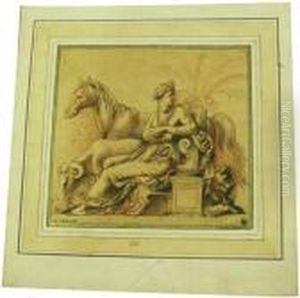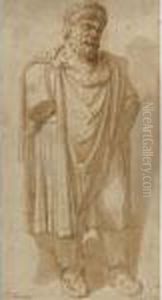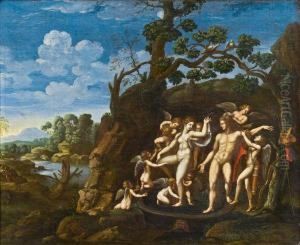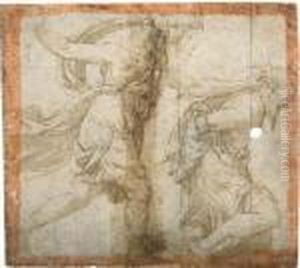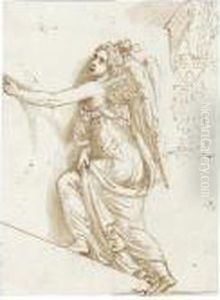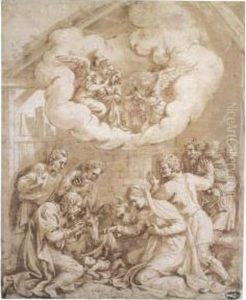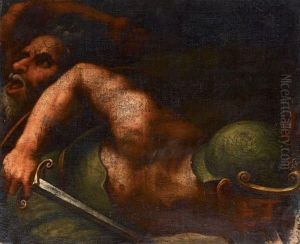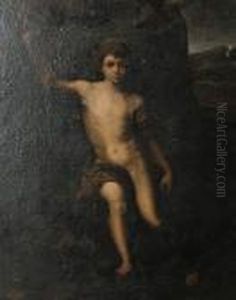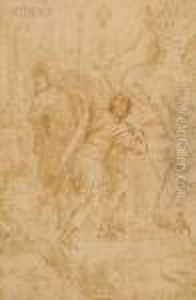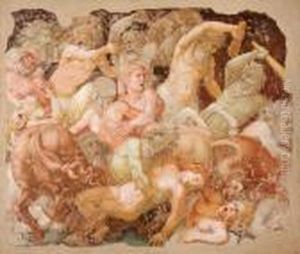Giulio Romano Paintings
Giulio Romano, born Giulio Pippi, was an influential Italian painter and architect, a prominent pupil of Raphael, and an important figure of the High Renaissance. Born in Rome in 1499, Romano was trained by Raphael and soon became one of his most trusted assistants. After Raphael's death in 1520, Romano completed a number of his master's unfinished works and carried on his artistic legacy.
Romano's style was characterized by its dynamic compositions, robust figures, and a dramatic use of perspective and chiaroscuro. He was not only a painter but also a skilled architect and designer. His architectural works are considered some of the finest examples of the late Renaissance style. He was particularly influential in the development of the Mannerist style, which emerged in the 1520s as a reaction against the balanced and harmonious compositions of the High Renaissance.
One of Romano's most significant contributions was to the city of Mantua, where he was invited by Federico II Gonzaga, the Duke of Mantua, in 1524. There, he was employed as the court artist and architect. In Mantua, he designed the Palazzo del Te, a masterpiece of Mannerist architecture, known for its playful and imaginative design that includes the famous Sala dei Giganti (Hall of the Giants). He also worked on the frescoes in the Palazzo Ducale in Mantua.
Giulio Romano's work as a painter, architect, and decorator made him one of the most versatile and innovative artists of his time. His influence extended across Italy and beyond, and his style helped bridge the transition between the High Renaissance and the Mannerist period. He died on November 1, 1546, in Mantua, leaving behind a legacy that would continue to inspire artists for generations.



